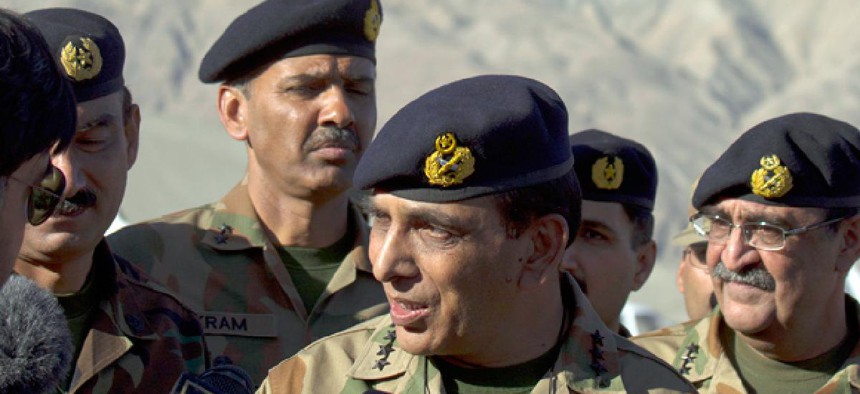
Pakistan's army chief Gen. Ashfaq Parvez Kayani, center, speaks with reporters in 2012. B.K. Bangash/AP
Pakistan and America have had some tough years. When President Obama first took office, Pakistan had just returned to democracy after years of military rule, and many were optimistic that the two countries could build a new and healthy relationship.
Leaders in both countries hoped they could contribute to regional stability, promote prosperity, and work together against militancy and terrorism. Instead, despite great effort, we've seen increasing mistrust and skepticism on both sides. Now, as President Obama begins his second term, Pakistanis prepare for an election that, if it proceeds as hoped, would mark the successful completion of a civilian term of office and the continuation of civilian institutional rule, flawed as Pakistani democratic institutions might be.
In both capitals, the high hopes of 2008-2009 have given way to a more sober mood. We now should engage realistic assessments of what we can do. Let me suggest how we can assess the last four years, and look forward to progress in the next four and beyond.
First, the common task of fighting militancy and terrorism remains a priority for both countries. I believe it is a mistake for America to view Pakistan exclusively through the optic of our efforts in Afghanistan, as we've too frequently done in recent years. And yet as the situation changes in Afghanistan in 2014 and beyond, we need to marry realistic timelines and policy decisions with the priorities of Pakistani officials. This means continuing with the successful formula of high-level meetings that combine military and civilian leaders from both countries ("three-on-three"), talking together about military and civilian topics, so that joint decisions on security issues are not hampered, or even crippled, by institutional barriers in either government.






